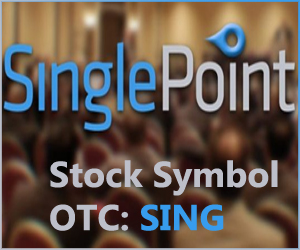Nebraska Medical Cannabis ‘Pill Bill’ Meets Backlash
Marijuana Industry News February 24, 2022 MJ Shareholders
Canada’s cannabis retailers experienced record sales throughout 2021, but that market growth is showing signs of slowing down from its rapid pace.
The world’s second-largest cannabis market hauled in a whopping CA$3.9 billion in 2021 sales among its eight largest provinces that regularly report monthly figures, according to federal data agency Statistics Canada. That figure represents 50% year-over-year growth from 2020’s CA$2.6 billion in sales.
While Canada’s most populated province, Ontario, represented the country’s largest cannabis market with CA$1.47 billion in 2021 sales, the fourth-largest province by population, Alberta, came in second with CA$716.7 million in sales.
Following suit were Quebec, CA$601 million; British Columbia, CA$556.2 million; Saskatchewan, CA$158.3 million; Manitoba, CA$148.8 million; Nova Scotia, CA$95.5 million; New Brunswick, CA$80.4 million; and Newfoundland, CA$60.7 million.
Editor’s note: Prince Edward Island and Canada’s three territories (Yukon, Nunavut and Northwest Territories) did not regularly report monthly sales figures in 2021.

Adobe Stock
The year was highlighted by eight straight months of growth from March through October, and then capped off with a record CA$382.4 million in sales for December.
While record retail months may continue, to some degree, 2021 trends indicate year-over-year growth is slowing. For instance, January 2021 sales increased 81.3% over January 2020 sales, but a steady decline progressed throughout the year to the point where December 2021 sales increased 28.5% over December 2020 sales.
Much of that early momentum in 2021 was perhaps connected to the tail-end revenue boosts from “Cannabis 2.0” rules. In late 2019, Canada’s adult-use retail market featured a host of new product options under the government’s new rules, which authorized the sales of derivative products, such as edibles, extracts and topicals.
The addition of those product offerings paved way for 2020’s 61% year-over-year growth, followed up by 2021’s 50% year-over-year growth.
But those record numbers from last year came during a time when cannabis retail prices declined across all product categories, including as much as 35% for some categories—cannabis concentrates and vape pens—according to market data from Seattle-based cannabis analytics firm Headset, which tracks data for Ontario, Alberta, British Columbia and Saskatchewan.
Headset senior data analyst Cooper Ashley previously told Cannabis Business Times that the record numbers were a result of consumer demand growing faster than prices fell.
“In fact, the large increase in total purchasing volume itself may have helped drive increased competition and price compression in the Canadian market,” he said.
As the Canadian cannabis market continues to mature, the supply-and-demand balance for the industry is still not up to par, Andrea Dobbs, co-founder and managing director at Village Bloomery, told CBT.
Opening in 2015, the Village Bloomery is a cannabis retail business in Vancouver, British Columbia, a province that experienced 50% year-over-year sales growth in 2021.
“In the unregulated market you can find what you want when you want it, but in the regulated market products are introduced and discontinued shortly thereafter,” Dobbs said. “We’ll put time and energy into educating people on the features and benefits of a product, which of course develops a following, only to turn around and discover that either the producers have decided to drop the product or the BCLDB [British Columbia Liquor Distribution Branch] decides not to continue with it.”
One of BCLDB’s approaches to dismantling the unregulated market is through manipulating product pricing and THC content, which isn’t always in line with the business operations of licensed retailers, Dobbs said.
Specifically, the Village Bloomery customer base is more nuanced and less concerned with prices and/or THC content, she said.
“Sure, accessibility is a concern, especially those of us whose livelihood has been directly impacted by the global pandemic, but most of us work to keep the pricing as tight as possible because we recognize the market is fragile,” Dobbs said.
She added, “There are many products that are in high demand and those are often sold out in seconds on the wholesale site, which in my opinion demonstrates that there is demand for this kind of product.”
In addition to prices for vape pens and cannabis cartridges dropping by 35% from January to December 2021, topicals (-30%), capsules (-20%), pre-rolls (-19%), dried flower (-16%), tinctures and sublingual products (-16%), beverages (-12%), edibles (-11%) and oils (-11%) all declined in equivalized price as well, according to Headset.
While price compression is most often driven by competitive pressures within a market, Ashley said, diversifying pricing tiers with brands aimed at providing offerings that cater to customers with different spending habits is often the next trend in a maturing market.
One consumer trend Ashley said he analyzed in 2021 was the purchase of larger package sizes (more grams per package) within four product categories: The average item price of products in the pre-roll category grew by 6% from January to December, while capsules (4%), edibles (1%) and beverages (1%) also increased.
In British Columbia, Dobbs said there have been some efforts to put ordering limits in place to prevent certain products from selling out so quickly, but, in reality, there just simply isn’t enough supply to go around.
“Most of the products that are hard to keep in stock are not products that the BCLDB prioritizes for their own stores,” she said. “That said, I’m happy to see high-quality products in the marketplace, and I’m happy to see that folks who used to shop with us pre-regulation are back looking for these products.”
MJ Shareholders
MJShareholders.com is the largest dedicated financial network and leading corporate communications firm serving the legal cannabis industry. Our network aims to connect public marijuana companies with these focused cannabis audiences across the US and Canada that are critical for growth: Short and long term cannabis investors Active funding sources Mainstream media Business leaders Cannabis consumers









